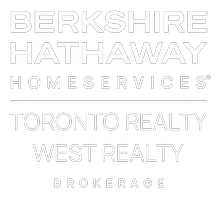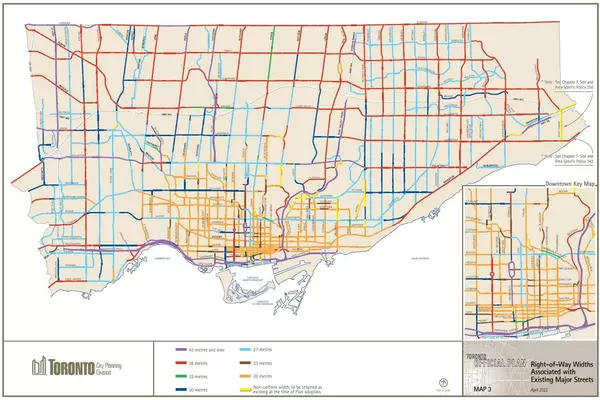Prestige Magazine Fall 2024
We're thrilled to unveil the Fall 2024 issue of Berkshire Hathaway HomeServices Prestige magazine—your ultimate guide to today’s trending luxury lifestyle topics.
In this edition, we dive into technological innovations in the hotel industry, the growing popularity of pickleball in upscale communities, and vibrant destinations like Park City, Key West, and Lake Maggiore, Italy.
Read Latest Issue
3 Government Changes You Should Know About
The real estate landscape is constantly evolving, and recent government changes have introduced new opportunities and benefits for buyers, homeowners, and investors in Canada. If you're planning to buy, refinance, or expand your property portfolio, it’s essential to understand these updates. Here are three key changes that could impact your real estate decisions:
1. New CMHC Guidelines for Insured Mortgages
As announced on September 16, 2024, the federal government is expanding eligibility for 30 year amortizations for insured mortgages to all first-time homebuyers and all purchasers of new builds, and increasing the $1 million price cap for insured mortgages to $1.5 million, effective December 15, 2024.
Key Changes to CMHC Mortgage Rules:
Increased Insured Mortgage Cap: The $1 million price cap for insured mortgages has been increased to $1.5 million, effective December 15, 2024, to reflect current housing market realities.
Expanded Eligibility for 30-Year Amortizations: All first-time homebuyers and buyers of new builds will be eligible for 30-year mortgage amortizations, starting December 15, 2024.
Impact: These new guidelines mean that more Canadians can access more of the housing market with lower down payments and manageable monthly payments. If you’re a first-time homebuyer or looking to enter the market, these updated guidelines could improve your chances of securing a mortgage and finding your dream home.
2. CMHC Secondary Suites Financing Program – Loans Up to $2 Million
Many homeowners have extra space they may want to convert into rental suites, such as an unused basement, or a garage that could be converted into a laneway home. Historically, the cost of renovating, combined with municipal red tape, has made this both difficult and expensive.
Key Updates to CMHC Loan Program:
Maximum Property Value Limit: The “as improved” value of the eligible residential property against which the loan is secured must be less than $2 million.
Maximum Loan-to-Value limit: Up to 90 per cent of the property value, including the value added by the secondary suite(s), in combination with any other outstanding loans secured by the property.
Maximum amortization: 30 years.
Additional Details: The project financing must not exceed the project costs. The cost of construction needs to be covered up from by the property owner and will be reimbursed on project completion.
Impact: This program is a game-changer for homeowners looking to build wealth, offset cost of living and maximize the value of their property. Whether you’re an investor, current homeowner, or buyer looking for an income-generating property, this financing vehicle makes it easierier than ever to add rental spaces, build generational wealth, and make homeownership more financially feasible.
3. Mortgage Renewal Without Requalifying with a New Lender
When a homeowners mortgage term is complete, they typically renew their mortgage for a new term at a new rate. Historically this process did not require the homeowner to requalify for the new loan, so long as they remained with the same lender. If they wished to "shop" for a better product, it required that they requalify should they move to a new lender - a process that could be daunting, and often times impossible. That has all changed under the new mortgage renewal guidelines eliminate the need for requalification when moving to a new lender, making it easier to shop for better rates and terms without the hassle of reassessment.
Impact: “When consumers renew their mortgages, their ability to switch to a competitive mortgage offer is critical to ensure they obtain the best rate and terms to serve their needs,” the Competition Bureau said in a submission to the Department of Finance, noting that the share of uninsured mortgages has been growing, climbing to 73 per cent by mid-2023.
These three government changes are designed to make homeownership, renewing financing, and investing in income producing properties easier and more accessible. Whether you’re a first-time buyer, homeowner, or property investor, staying informed about these updates can help you make more strategic real estate decisions in 2024 and beyond.
Why now is the time to buy. (In 3 charts)
With interest rates on the decline, it's not a matter of if, but when the real estate market in the Greater Toronto Area (GTA) starts to buzz again. If you’re on the fence about buying, there are three powerful reasons why now is the ideal time to make your move. Backed by data, we will walk you through the trends that reveal why waiting might mean missing out on substantial opportunities. Let’s dive into three key charts that highlight what’s currently unfolding in the GTA market:
1. Rate Drops = Price Growth
Historically, every time interest rates have declined, the effect on GTA home prices has been unmistakable: sustained growth. This pattern isn’t unique to the GTA; it’s a basic market reaction. Lower rates mean mortgages become more affordable, which fuels demand and pushes prices up.
In the past, rate reductions have consistently triggered price growth that continues long after the rates have dropped. This isn't just a short-term boost; it’s a sustained upward trend. A series of current and future rate cuts are all but a certainty —and with it, an opportunity for buyers to secure homes at prices that are likely to increase in the near future.
2. A Temporary Pause in Price Growth
While prices in the GTA have shown resilience, they have temporarily paused in their upward climb over the past couple of years. Why? Simply put, high-interest rates have cooled down demand slightly. This pause has created a rare window for buyers to catch their breath and enter the market before prices pick up again.
In other words, this momentary stabilization may be a short-lived opportunity. Many buyers have been sitting on the sidelines, but once rates drop, we could see a renewed rush into the market, driving prices back up. Taking advantage of this current pause allows buyers to get ahead of the curve and secure a property at a more manageable price point before the market heats up again.
3. High Inventory, High Choice
For the first time in years, inventory levels are historically high in the GTA, particularly in townhouses and, even more so, condos. This increased supply gives buyers a tremendous advantage. When there are more options on the market, buyers have the power to negotiate. They can take their time, compare options, and even push for concessions that wouldn’t be possible in a tighter market.
Condo and townhouse inventory in the GTA is at a level we haven’t seen in years, creating a unique buyer’s market in a traditionally seller-driven region. This high inventory means more selection, better deals, and the negotiating strength that is rarely seen in such a competitive market.
In short, the combination ongoing rate drops, a temporary stabilization in prices, and an elevated inventory level offers a unique trifecta for buyers. If you've been thinking about entering the GTA market, now may be the best time to do so. You’ll have the opportunity to secure a property before prices pick up again, enjoy increased negotiating power, and choose from a diverse array of options.
October 2024 Detailed Market & Mortgage Report
Wow, what a few months! The Department of Finance has relaxed mortgage rules and the Bank of Canada has dropped their overnight rate by -0.50% (cumulative reduction of -1.25% since June 2024).
In this month's Outline update, we include the following:
Our most recent Economic/Mortgage Report
Info guide on upcoming mortgage rule changes
Bank of Canada's jumbo rate reduction
Our most recent Stats Outline Report
As always, should you have any questions or requests regarding this update, or any mortgage related inquiries at all, please reach out at any time.
Mortgage & Economic Outline Report
Please find below the links to this month's edition of the Mortgage & Economic Outline Report. Topics covered within this report include:
Report Contents
The Bank of Canada (BoC) Rate Announcement
Major Banks’ Overnight Rate Forecast for 2024/25
Key Economic Reports and Dates to Watch
Upcoming mortgage rule changes
Mortgage Rules are Changing
After almost two decades of policy tightening, the Federal government recently announced a number of changes to make mortgages more affordable and attainable.
To help navigate the changes, and potential benefits, we have created the below info sheet which discusses the upcoming December 15th changes to insured mortgages. Please also refer to the mortgage outline report above for details on the upcoming changes to secondary suite financing effective January 15th, 2025.
Click on the below image, to download the guide.
A Jumbo Rate Cut Announcement
Four in a row! On October 23rd, the Bank of Canada announced a jumbo rate drop of -0.50%. We've now had a combined reduction of -1.25% over the past 5 months, and we expect to see further rate cuts in the coming months.
This brings the overnight rate down to 3.75% and the Prime rate is expected to follow by dropping to 5.95%.
In the attached info guide we discuss what the recent rate drops could mean for you, why the Bank of Canada decided to lower rates, and what might be next.
In the News (Mortgage & The Economy)
The below list of articles and videos are curated from major news outlets across Canada and licensed and formatted for easy sharing across social media:
Bank of Canada cuts its key interest rate by a half-point to 3.75%
Inflation falls to 1.6%, making a case for larger Bank of Canada rate cut
Canadian GDP beat estimates in July, but slowed in August, potentially bolstering case for larger rate cut
Location Specific Market Reports
Below you will find detailed Executive Summary reports for each region in TRREB. Each Executive Summary Report includes a map of the included zones and a 17 page summary for each property type (detached, semi-detached, townhomes, condos)The Information / statistics you can find in each Executive Summary Report include:
Data comparing the – 1, 3, 5 and 10 year sales averages.
Stats categories – Sales, New Listings, Active Listings, Average Price, Months of Inventory (MOI), Sales to New Listing Ratio (SNLR)
All 416 Report | Core 416 Report | All 905 Report
Halton Report | Peel Report | Oakville Report | Burlington Report
York Report | Durham Report | Simcoe Report
Critical Changes to Insured Mortgages & Their Benefits
On September 16th 2024, the Canadian government made two massive updates to their insured mortgage guidelines. These changes will have a meaninful impact for first time and move up buyers. The newly announced rules now allow for any buyer to purchase a principal residence for up to $1.5 Million with a less than 20% down payment (previously $1 Million). In addition, first time homebuyers who purchase a property with less than 20% down will now be able to amortize their loans over 30 years (previously 25) which in turn will reduce their monthly mortgage paymens. These two changes will make purchasing a home significantly more achievable for many by requiring them to save less up front and by lowering their monthly mortgage payments.
In this blog we will explain the insured mortgage process in detail including the qualification criteria, costs, benefits and financial examples.
What Is an Insured Mortgage?
When a buyer uses less than 20% for the downpayment of a property purchase, they must purchase "mortgage default insurance" for their mortgage loan. The cost of the insurance is based on the size of the loan and is added to the total mortgage amount and paid off through monthly mortgage payments.
Insured mortgages were previously only available for properties that were purchased for under $1 Million but are now available for purchases up to $1.5 Million. The downpayment requirements depend on the purchase price of the home. The minimum down payment is 5% of the first $500,000 of the purchase price and 10% on the remainder. For example a property purchased for $1 Million would require a downpayment of $75,000. ($500k x 5% = $25k + $500K x 10% = $50k)
Insured mortgages are available through all of the same lenders as a conventional mortgage and come with a number of advantages.
Advantages of an Insured Mortgage
Less Capital/Savings Required
The number one barrier for buyers looking to enter or move up in the market is access to capital for a downpayment. Many buyers have the required income to obtain a mortgage, but lack the savings for the downpayment. The time required to save for a downpayment has become more and more challenging and has caused many people to give up on their home ownership goals. While insured mortgages have been available to buyers for years, the previous $1 Million purchase price limit was not aligned with current market pricing, and as a result was useless for most buyers. Under the new rules, a $1.5 Million property would require a $125,000 downpayment compared to $300,000 previously.
Access to Lower Interest Rates
Insured mortgages carry less risk for lenders since they are backed and guaranteed by default insurance. This lower risk allows the banks to provide lower mortgage rates to borrowers. Generally speaking, insured mortgages are .5% lower than the equivilant conventional loan. For example, if a 5-year fixed rate for a conventional mortgage is 4.79%, the 5-year fixed rate for an insured mortgage would be 4.29%.
Easier Approval for First-Time Buyers
First-time homebuyers, especially those with limited credit history or lower income, may find it easier to get approved for an insured mortgage. The insurance mitigates the lender's risk, which means you can qualify even with a smaller down payment. This opens the door to homeownership for those who might otherwise struggle to enter the market.
Faster Market Entry
Saving for a 20% down payment on a $1.5 Million property takes most people a number of years. For many, this creates a scenario where by the time they have the savings needed for a downpayment, property prices have grown beyond their reach. Entering the market as soon as possible is the only way to ensure that you aren't priced out of it.
Entering the market also allows property owners to begin building equity through mortgage payments and increases in property values. Over the past 10 - 15 years, waiting to purchase a property in order to increase savings for a downpayment has been a costly strategy.
Insured mortgages allow buyers to enter the market faster, and the updated guidelines now make them valuable and accessible for a huge segment of the buyer market.
Purchase Example for $1.5 Million Property
Under the previous rules, purchasing a $1,500,000 property would require a $300,000 (20%) down payment, and buyers would only have access to conventional mortgage rates. For context sake, as of the writing of this blog, that would equate to approximately 4.8% for a 5 year fixed mortgage.
Under the new rules, the down payment required for the same purchase would be $125,000 and the mortgage rate would be 4.3% for a 5 year fixed mortgage.
Insured Purchase - $170,000 Cash Needed
Downpayment = $125,000
Land Transfer Tax = $45,000
Mortgage Insurace = $55,000 (Added to Mortgage)
Monthly Payment = $6,897
Conventional Purchase - $345,000 Cash Needed
Downpayment = $300,000
Land Transfer Tax = $45,000
Monthly Payment = $6,262
2024/25 BHHS Global Luxury Landscape Report
In the fast-paced world of luxury real estate, staying ahead of trends is essential. Our latest report offers an in-depth overview of global luxury markets, spotlighting critical trends such as wellness, design innovation, and the impact of AI. This comprehensive resource will help you understand and leverage the emerging trends that are shaping the future of luxury real estate.
Read the report- 2024/25 Global Luxury Landscape Report
20 Year Investment Story - Basement Apartment
Renting out a basement apartment in Toronto can be a lucrative investment, especially if you’re prepared for the initial costs and committed to long-term growth. In this blog, we'll explore the potential earnings from renting a basement apartment over 20 years, factoring in a startup cost of $75,000, annual rent increases, and the impact of investing rental income in the stock market with an 8% average annual return. We’ll also calculate how long it would take to recover your initial investment and determine the overall Internal Rate of Return (IRR).
Calculating 20 Year Increase in Wealth
1. Initial Setup Costs: $75,000
Before you start earning rental income, you’ll need to invest in setting up the basement apartment. These startup costs could include renovations, permits, and any necessary upgrades to make the space livable and legally compliant. For this analysis, we’ll assume a total startup cost of $75,000.
2. Starting Monthly Rent: $2,000
Let’s assume you start by renting the basement apartment at $2,000 per month. This translates to an annual income of $24,000.
3. Annual Rent Increase: 2%
We’ll assume that rent increases annually by 2%, which is a typical rate aligned with inflation in Canada. Here’s how the rent and cumulative income would develop over 20 years:
Year
Monthly Rent
Annual Rent
Cumulative Rental Income
1
$2,000
$24,000
$24,000
2
$2,040
$24,480
$48,480
3
$2,081
$24,970
$73,450
4
$2,122
$25,469
$98,919
5
$2,165
$25,978
$124,897
10
$2,430
$29,158
$258,864
15
$2,740
$32,882
$432,314
20
$3,091
$37,092
$642,703
---
By the end of 20 years, the cumulative rental income would be $642,703.
Recouping Your Initial Investment
To determine how long it would take to recover the initial $75,000 investment, we’ll look at the cumulative rental income over the first few years:
Year 1: $24,000
Year 2: $48,480
Year 3: $73,450
Year 4: $98,919
By the end of Year 3, your cumulative rental income would be $73,450, which is slightly below the initial investment. However, by the middle of Year 4, you would surpass the $75,000 mark, meaning it would take approximately 3.5 years to recoup your initial investment.
Investing Rental Income in the Stock Market
Now, let’s consider the potential earnings if you invest the rental income in the stock market, with an average annual return of 8%. We’ll assume that you reinvest the rental income monthly.
1. Monthly Investment
We’ll start by investing the $2,000 monthly rent, and as the rent increases, the investment amount will also increase.
2. Compounding Growth Over 20 Years
Given the monthly rental income and an 8% annual return, here’s how your investment portfolio might grow over 20 years:
Year
Monthly Rent
Annual Investment
Investment Growth (End of Year)
1
$2,000
$24,000
$24,962
2
$2,040
$24,480
$52,497
3
$2,081
$24,970
$83,731
4
$2,122
$25,469
$118,922
5
$2,165
$25,978
$158,354
10
$2,430
$29,158
$388,243
15
$2,740
$32,882
$718,817
20
$3,091
$37,092
$1,231,131
---
By investing your rental income monthly, your portfolio could grow to approximately $1,231,131 over 20 years.
Calculating the Internal Rate of Return (IRR)
The Internal Rate of Return (IRR) is a measure used to evaluate the profitability of an investment. It’s the discount rate that makes the net present value (NPV) of all cash flows (both inflows and outflows) equal to zero.
1. Cash Flows
Initial Investment (Year 0): -$75,000
Annual Rental Income (Years 1–20): Starting at $24,000 and increasing annually by 2%.
The IRR calculation considers the initial outflow of $75,000 and the annual inflows from rental income.
Given the cumulative rental income and the compounding investment growth, the IRR for this investment would be approximately 14% over 20 years. This IRR reflects the combination of direct rental income and the compounded returns from investing that income in the stock market.
Total Potential Earnings Over 20 Years
Finally, let’s summarize your potential earnings:
Total Rental Income: $642,703 + Investment Growth: $588,429
Total Potential Earnings: $1,231,131
After accounting for your initial $75,000 investment, the total net earnings would be $1,156,131 over 20 years.
Additionally, the $75,000 investment will increase the value of the property at an exponential rate, ranging from $150,000 to $200,000.
Conclusion
Investing in a basement apartment in Toronto could yield nearly $1.3 million over 20 years when considering rental income, compounded investment growth as well as increased property value. With a startup cost of $75,000, you could recoup your initial investment in about 3.5 years, with an overall IRR of approximately 14%. This highlights the strong potential for real estate investments when combined with disciplined, long-term investing.
If you’re considering renting out a basement apartment, understanding the long-term financial benefits and planning your investment strategy accordingly can help you maximize your returns and achieve substantial financial growth over time.
2024 Fall Market Predictions
To understand where the real estate market in the Greater Toronto Area (GTA) might be headed, it's crucial to first examine where it has been.
Prior to 2022, the Toronto Real Estate Board recorded only two years in the past two decades where sales volumes fell below 80,000: in 2008 and 2018. Over this period, annual transaction volumes averaged just under 90,000, with a low of 74,500 in 2008 and 78,000 in 2018. However, the last three years have seen an unprecedented drop in yearly transactions, with 75,000 in 2022, 66,000 in 2023, and a projected pace of 63,000 for 2024.
The decline in sales volume began concurrently with the Bank of Canada's initial rate hike in 2022, indicating a strong correlation between interest rate changes and market activity.
So, what lessons can we learn from past trends, and what do they suggest about the months and years ahead?
The 2008 market downturn was driven by the global financial crisis. The stock market crashed, unemployment surged, access to financing tightened, and consumer confidence plummeted. In January 2008, the Bank of Canada initiated a series of interest rate cuts, reducing the overnight rate from 4.5% to 4.25% (coincidentally the current rate is also 4.5%). Although these cuts took time to influence the market, by 2009, the overnight rate had dropped to 1%, and real estate transaction volumes and prices began to rise.
Similarly, 2018 was marked by shifting interest rates. After several years with a 0.5% overnight rate, the Bank of Canada began raising rates in July 2017, peaking at 1.75% by the end of 2018. Additionally, 2018 introduced the mortgage “stress test” for uninsured mortgages, significantly affecting buyers' purchasing power. This combination of the stress test and rising rates put short-term downward pressure on the market. Unlike in 2008, the rebound in sales in 2019 wasn't driven by a reduction in interest rates but rather by a pause in rate hikes and consumer adjustment to the stress test.
These examples highlight clear parallels to today’s market, where changes in mortgage and interest rates correlate with reduced sales volumes. However, unlike 2008 and 2018, today's market is experiencing higher inventory levels.
In 2008 and 2018, new listings actually decreased from the prior year and continued to decline the following year. This decrease in inventory put upward pressure on prices and tempered what could have been an even stronger rebound in sales transactions.
In contrast, new listings in 2024 have increased every month compared to 2023. This rise in inventory is exerting downward pressure on prices, particularly in the condo market. When you combine the current inventory levels, downward pressure on prices, and ongoing interest rate cuts, the evidence points to a strong rebound in sales volume in 2025.
“With another rate cut announced on July 24, we’ve now seen two rate cuts in a row, and the expected pace of future policy easing has steepened considerably, with markets now anticipating rate cuts at every remaining Bank of Canada decision this year,” said Shaun Cathcart, CREA’s Senior Economist. “Combine that with a record amount of demand waiting in the wings, and the forecast for a rekindling of Canadian housing activity going into 2025 has just gone from a layup to a slam dunk.”
In summary, given the historically low sales transactions over the past three years, pent-up buyer demand is at record levels. With interest rates almost certain to decrease significantly, combined with currently elevated inventory levels, transaction volumes are likely to increase substantially in the short to medium term. As for pricing, inventory levels for different property types will ultimately determine price trends. Condos may see prices remain flat or slightly decrease in the short term, while houses and townhouses are likely to see price increases driven by rate reductions and strong demand.
The opportunity in Toronto's new "major street" bylaw.
In a landmark decision, Toronto City Council voted 21-3 to approve the Major Streets plan, paving the way for more townhouses and six-storey residential buildings on major streets in residential areas. This move aims to create gentle density, increasing housing options and transforming the city's urban landscape.
Under the new plan, properties located on designated "busy streets" (See map below) will be able to build up to 60 units and up to 6 storeys "as of right". This means that no special permission is required as long as a proposed development meets the City's zoning criteria.
Key Highlights:
Townhomes and small residential buildings can now be built on specific major streets without rezoning applications
Apartment buildings can have up to 60 units and be up to 6 storeys
31,000 lots across the city will be opened up for development
Properties that may have once been "less desireable" will see an increase in value
Developers and investors have new lucrative opportunities
"Major Streets" Map:
Aiming for Housing Diversity:
The goal is to provide a full range of housing options, making Toronto more affordable and livable. By expanding permissions for townhouses and low-rise housing, the city can:
Support those who cannot afford detached or semi-detached homes
Contribute to neighborhood stability
Benefit families and young Torontonians looking to set down roots
Improve/reduce development costs
Addressing Housing Affordability:
Toronto's housing market has long been characterized by high prices and limited options. The Major Streets plan aims to address this by increasing the supply of affordable housing, particularly in areas with good access to transit and amenities.
Unique Investment Opportunity:
There are a number of factors that make this a unique and lucrative investment opportunity for developers and investors.
1. Properties on "busy streets" are typically priced much lower than on more desirable streets. This is a short term opportunity that will most likely change moving forward.
2. The scale of the project provides more economies of scale when compared to a smaller tri-plex or four-plex investment. This provides investors with a higher and safer return on investment.
3. The projects allow for commercial financing options including the incredible CMHC MLI Select program. This program, outlined in a previous blog, allows for up to 95% purchase and construction financing, up to 50 year ammortizations as well as low fixed rates.
Building on Previous Initiatives:
This move follows recent gentle density initiatives, including:
Legalization of multiplexes (up to four units)
Legalization of garden suites and laneway suites
These initiatives demonstrate the city's commitment to increasing housing options and promoting more efficient use of land.
A New Era for Toronto's Housing Landscape:
The Major Streets plan marks a significant shift towards creating more inclusive, diverse, and sustainable communities. By embracing gentle density, Toronto is taking a crucial step towards addressing housing affordability and providing more options for its residents.
What's Next?
As the city moves forward with implementing the Major Streets plan, residents can expect to see more townhouses and low-rise apartments popping up along major streets. Developers will have more flexibility to build innovative, family-friendly homes, and neighborhoods will become more vibrant and diverse.
Conclusion:
The approval of the Major Streets plan is a significant victory for Toronto's housing landscape. By embracing gentle density, the city is prioritizing affordability, sustainability, and community. As Toronto continues to grow and evolve, this move will play a crucial role in shaping its future as a livable, inclusive, and thriving city.
June 2024 Detailed Market & Mortgage Report
June 2024 home sales in the Greater Toronto Area (GTA) were lower compared to the same month last year, according to the Toronto Regional Real Estate Board (TRREB). Despite the Bank of Canada rate cut at the beginning of last month, many buyers kept their home purchase decisions on hold. The market remained well-supplied, resulting in a slight dip in the average selling price compared to June 2023.
“The Bank of Canada’s rate cut last month provided some initial relief for homeowners and home buyers. However, the June sales result suggests that most home buyers will require multiple rate cuts before they move off the sidelines. This follows Ipsos polling for TRREB, which suggested that cumulative rate cuts of 100 basis points or more are required to boost home sales by any significant amount,” said TRREB President Jennifer Pearce.
GTA REALTORS® reported 6,213 home sales through TRREB’s MLS® System in June 2024 – a 16.4 per cent decline compared to 7,429 sales reported in June 2023. New listings entered into the MLS® System amounted to 17,964 – up by 12.3 per cent year-over-year.
The MLS® Home Price Index Composite benchmark was down by 4.6 per cent on a year-over-year basis in June 2024. The average selling price of $1,162,167 was down by 1.6 per cent over the June 2023 result of $1,181,002. On a seasonally adjusted monthly basis, both the MLS® HPI Composite and the average selling price were up compared to May 2024.
“The GTA housing market is currently well-supplied. Recent home buyers have benefitted from substantial choice and therefore negotiating power on price. Moving forward, as sales pick up alongside lower borrowing costs, elevated inventory levels will help mitigate against a quick run-up in selling prices,” said TRREB Chief Market Analyst Jason Mercer.
“Despite a temporary dip in home sales due to high interest rates, we know that strong population growth is driving long-term demand for ownership and rental housing. Ontario has set the goal of 1.5 million more homes on the ground by 2031. This is only possible if all levels of government ensure actionable solutions with sustained effort, including continuing to remove red tape, avoiding financial barriers to home construction, and minimizing housing taxes and development charges,” said TRREB CEO John DiMichele.
Mortgage & Economic Outline Report
Please find below the links to this month's edition of the Mortgage & Economic Outline Report. Topics covered within this report include:
Report Contents
The Bank of Canada (BoC) Rate Announcement
BoC Monetary Policy Report - Housing Comments
Major Banks’ Overnight Rate Forecast for 2024/25
Financial Market Forecast for Canada and US Rates
Bond Yields & Fixed Rate Movement and Drivers
Key Economic Reports and Dates to Watch
Mortgage Arrears - Rising, but Still Relatively Low
---
Stats Outline Report & Database
In this month's Stats Outline Report and database, we analyze TRREB data for June 2024 (for the month, YTD, and rolling 12-months) relative to the past 10 years to try and uncover any new trends and insights. While the below report includes our macro level conclusions, details by region and zone can be found in the custom reports database link that follows.
---
Location Specific Market Reports
Below you will find detailed Executive Summary reports for each region in TRREB. Each Executive Summary Report includes a map of the included zones and a 17 page summary for each property type (detached, semi-detached, townhomes, condos)The Information / statistics you can find in each Executive Summary Report include:
Data comparing the – 1, 3, 5 and 10 year sales averages.
Stats categories – Sales, New Listings, Active Listings, Average Price, Months of Inventory (MOI), Sales to New Listing Ratio (SNLR)
All 416 Report | Core 416 Report | All 905 Report
Halton Report | Peel Report | Oakville Report | Burlington Report
York Report | Durham Report | Simcoe Report
The missed opportunity in today’s market.
Toronto's real estate market is facing a unique challenge - a gap between older sellers and younger buyers. This gap is rooted in the differing priorities and circumstances of these two generations, leading to a mismatch in the housing market.
Older Homeowners: No Desire to Modernize
Many older homeowners in Toronto are reluctant to modernize their properties, and it's not just about the cost. They often lack the desire, connections, and will to renovate, preferring to maintain their homes as they are. Additionally, many older homeowners may not qualify for loans without a steady income, making renovations a financial burden.
Here are some potential reasons why older homeowners might be hesitant to modernize their properties:
Emotional attachment: Older homeowners may have an emotional attachment to their homes and the memories they've made there. They may feel that renovating would erase those memories or change the character of their home.
Lack of knowledge: Older homeowners may not be familiar with the latest design trends, technologies, or building materials, which can make the renovation process seem overwhelming.
Fear of disruption: Renovations can be disruptive and chaotic, especially for older adults who value their routine and quiet lifestyle.
Physical limitations: Older homeowners may have physical limitations that make it difficult for them to manage a renovation project, such as mobility issues or chronic health conditions.
Social isolation: Older adults may be socially isolated, which can make it harder for them to connect with contractors, designers, and other professionals who can help them with renovations.
Financial constraints: As you mentioned, many older homeowners may not qualify for loans without a steady income, making renovations a financial burden.
Prioritizing other expenses: Older adults may have other financial priorities, such as healthcare expenses, travel, or supporting family members, that take precedence over home renovations.
Lack of trust: Older homeowners may be hesitant to trust contractors, designers, or other professionals with their home and their money.
Younger Buyers: Stretching Themselves Thin
Younger buyers in Toronto are eager to find modern and renovated homes, but they're already stretching themselves financially with down payments and mortgages. They may not have the means to fund renovations through other loans, and their busy lives with long work schedules and family responsibilities make it difficult to take on the added stress of renovations.
Here are some potential reasons why younger buyers in Toronto may be hesitant to take on renovations:
Financial strain: Younger buyers may be already stretching themselves financially with high down payments and mortgages, leaving them with limited funds for renovations.
Lack of additional savings: They may not have enough savings to cover the costs of renovations, which can be a significant expense.
High debt-to-income ratio: Younger buyers may have high debt-to-income ratios, making it difficult for them to qualify for additional loans or credit to fund renovations.
Busy lives: They may have demanding work schedules and family responsibilities, leaving them with limited time and energy to manage a renovation project.
Lack of expertise: Younger buyers may not have the necessary expertise or experience to manage a renovation project, which can be overwhelming and stressful.
Fear of the unknown: They may be hesitant to take on renovations because they're unsure of the costs, timelines, and potential surprises that can arise during the process.
An Opportunity for the Willing and Able
This gap in the market creates an opportunity for those who are willing and able to renovate a home.
For sellers, making the effort to update at least part of the home, can generate a significant return on investment. Redoing a roof, replacing windows, updating electrical or improving a kitchen or bathrooms are all investments that a potential buyer will not have to make out of their own pocket (as opposed to included in a mortgage). This will make the property significantly more attractive to a larger pool of buyers.
For buyers, properties that need more work can be purchased at better prices with less competition. For those who can see beyond the cosmetic issues and envision a modern and renovated space, this gap presents a chance to own a dream home at a more affordable price.
Here are some potential benefits for those who are willing and able to purchase a home that needs to be renovated:
Affordable prices: Properties that need more work can be purchased at lower prices, making them more affordable for buyers.
Less competition: There may be less competition for properties that need more work, making it easier for buyers to purchase the home they want.
Customization: Buyers can customize the property to their liking, creating a modern and renovated space that suits their needs and tastes.
Potential for profit: Renovating a property can increase its value, providing a potential profit for buyers who decide to sell in the future.
Personal satisfaction: Renovating a property can be a fulfilling experience, allowing buyers to create a home that reflects their personality and style.
Overall, the gap in the market between older sellers and younger buyers presents an opportunity for those who are willing and able to renovate a home. By capitalizing on this gap, both buyers and sellers can benefit from being bold and proactive.
A Look Back: Toronto Neighbourhoods 100 Years Ago
Step back in time to explore some of Toronto's most popular neighbourhoods as they were 100 years ago. In 1924, Toronto was a bustling city with a population of over 500,000 people. The city was rapidly growing, and its neighbourhoods were shaping up to be the vibrant communities we know today. Let's take a journey through some of Toronto's top neighbourhoods 100 years ago.
1. Cabbagetown (Population: 10,000)
Cabbagetown, named for the Irish immigrants who grew cabbage in their front yards, was a working-class neighbourhood. It was home to the city's first Catholic church and a bustling commercial centre.
Dundas St. East, looking east, past River Street, 1937
2. Chinatown (Population: 1,500)
Toronto's Chinatown was a small but vibrant community, established in the late 19th century. It was a hub for Chinese immigrants and a popular destination for shopping and dining.
Queen and Spadina, 1912
Queen and Spadina, 1914
3. The Annex (Population: 5,000)
The Annex, named for its annexation by the city in 1886, was a wealthy neighbourhood with large Victorian homes. It was home to the city's elite and the University of Toronto.
Trinity St. Pauls United Church, 427 Bloor St West, Circa 1910
Madison Avenue Looking South to Dupont, 1910
4. Kensington Market (Population: 5,000)
Kensington Market, once a Jewish market, was a bustling commercial centre with pushcarts and peddlers. It was a hub for immigrants and a popular destination for shopping.
Trachter’s Milk Store, 71 Kensington Avenue, 1925
Kensington Avenue, 1920
5. Riverdale (Population: 10,000)
Riverdale, a working-class neighbourhood, was home to the city's first horsecar line and a bustling commercial centre. It was a popular destination for shopping and entertainment.
Gerrard and Broadview, 1913
Riverdale Park, 1920
6. Yorkville (Population: 2,000)
Yorkville, a small village, was home to the city's elite and a popular destination for shopping and dining. It was known for its beautiful parks and historic homes.
Yorkville Town Hall, 1920
Yonge and Bloor, 1920
7. Little Italy (Population: 2,500)
Little Italy was a small but vibrant community, established in the early 20th century. It was a hub for Italian immigrants and a popular destination for food and entertainment.
College and Grace, 1920
College and Grace, 1936
8. The Junction (Population: 5,000)
The Junction, a working-class neighbourhood, was home to the city's first railway station and a bustling commercial centre. It was a popular destination for shopping and entertainment.
Dundas and Keele, 1923
The Stockyards Bridge, 1919
Toronto's neighbourhoods 100 years ago were vibrant and diverse, shaped by immigration and industrialization. While some neighbourhoods have retained their historic charm, others have evolved to reflect the city's changing landscape. Whether you're a history buff or a curious Torontonian, exploring the city's neighbourhoods is a journey through time.
Photos from: City of Toronto Archives and Toronto Public Library
Global Open House Season 5 Episode 3
🍿 Season 5, Episode 3 of our Global Open House series has arrived!
Episode 3 explores stunning properties in Princeton, New Jersey; Chicago, Illinois; and Rancho Sante Fe, California.
All About The Ontario Line
The Ontario Line is a highly anticipated addition to Toronto's transit system, promising to revolutionize the way residents and visitors navigate the city. This new subway line will provide a faster, more efficient, and more convenient way to travel across Toronto, connecting some of the city's busiest neighborhoods and attractions.
What is the Ontario Line?
The Ontario Line is a 15.6-kilometer subway line that will run from the Ontario Science Centre in the north to the Exhibition/Ontario Place area in the south. The line will have 15 stations, including several transfer points to existing TTC lines and bus routes. The Ontario Line will be a vital part of Toronto's transportation network, providing a fast and reliable way to travel across the city.
Benefits of the Ontario Line
The Ontario Line promises to bring numerous benefits to Toronto's transit system, including:
Faster travel times: The Ontario Line will reduce travel times by up to 40% in some areas, making it a more attractive option for commuters.
Increased capacity: The new line will have the capacity to carry up to 30,000 passengers per hour, reducing congestion on existing lines.
Improved connectivity: The Ontario Line will connect to several existing TTC lines and bus routes, making it easier to get around the city.
Economic growth: The Ontario Line is expected to stimulate economic growth in the areas it serves, attracting new businesses and developments.
Job creation: The construction of the Ontario Line will create thousands of jobs, both during the construction phase and once the line is operational.
Environmental benefits: The Ontario Line will provide a cleaner and more efficient way to travel, reducing the number of cars on the road and decreasing air pollution.
Stations Along the Ontario Line
The Ontario Line will have 15 stations, each designed to provide a safe, accessible, and convenient travel experience. Some of the stations include:
Ontario Science Centre Station: This station will be a major transfer point, connecting to the TTC's Line 5 and several bus routes.
Flemingdon Park Station: This station will serve the Flemingdon Park neighborhood, providing easy access to the Ontario Science Centre and the nearby Flemingdon Park shopping center.
Thorncliffe Park Station: This station will serve the Thorncliffe Park neighborhood, providing easy access to the nearby Thorncliffe Park shopping center and the Don River Trail.
Cosburn Station: This station will serve the Cosburn neighborhood, providing easy access to the nearby Cosburn Avenue shopping district.
Greenwood Station: This station will serve the Greenwood neighborhood, providing easy access to the nearby Greenwood Avenue shopping district.
Gerrard Station: This station will serve the Gerrard neighborhood, providing easy access to the nearby Gerrard Avenue shopping district.
Riverside Station: This station will serve the Riverside neighborhood, providing easy access to the nearby Riverside Avenue shopping district.
Eastern Avenue Station: This station will serve the Eastern Avenue neighborhood, providing easy access to the nearby Eastern Avenue shopping district.
Corktown Station: This station will serve the Corktown neighborhood, providing easy access to the nearby Corktown shopping district.
Moss Park Station: This station will serve the Moss Park neighborhood, providing easy access to the nearby Moss Park shopping district.
Queen Station: This station will serve the Queen neighborhood, providing easy access to the nearby Queen Street shopping district.
Osgoode Station: This station will serve the Osgoode neighborhood, providing easy access to the nearby Osgoode Hall Law School and the Ontario Court of Appeal.
Queen/Spadina Station: This station will serve the Queen neighborhood, providing easy access to the nearby Queen Street shopping district.
King/Bathurst Station: This station will serve the growing King West and Fashion District neighbourhood.
Exhibition/Ontario Place Station: This station will serve the Exhibition/Ontario Place area, providing easy access to the nearby Exhibition Place and Ontario Place.
Summary
The Ontario Line is an exciting addition to Toronto's transit system, promising to improve travel times, increase capacity, and stimulate economic growth. With its 15 stations and convenient connections to existing TTC lines and bus routes, the Ontario Line is set to become a vital part of Toronto's transportation network. Stay tuned for updates on the Ontario Line's construction progress and get ready to experience the future of transit in Toronto!
FAQs
When will the Ontario Line be completed?The Ontario Line is expected to be completed in 2027.
How much will the Ontario Line cost?The estimated cost of the Ontario Line is $10.9 billion.
How many passengers will the Ontario Line carry?The Ontario Line is expected to carry up to 30,000 passengers per hour.
Will the Ontario Line have parking?Yes, some stations along the Ontario Line will have parking facilities.
Prestige Magazine 10 Year Anniversary Edition
Much has changed across the real estate landscape over the last decade. Yet, as Prestige magazine celebrates this landmark anniversary, the concept of home as a treasured retreat continues to dominate purchasing decisions in the global luxury property market. Since its inception in 2014, both print and digital editions of Prestige have garnered a diverse, affluent audience. Published three times a year, the magazine celebrates luxury living with unique editorial content while showcasing unforgettable properties across the globe.
---
READ THE LATEST ISSUE
---
Global Luxury Reveal
“When I joined Berkshire Hathaway HomeServices in the winter of 2013, the brand’s Luxury Collection was just starting to build and I felt there would be value for our network agents and their clients in creating a luxury lifestyle global magazine that spoke to a broad audience featuring topics about people, places, and homes,” recalls Wendy Durand, Berkshire Hathaway HomeServices Senior Vice President of Global Marketing and Communications.
“As the first issue was unveiled, it was all fear and joy presenting a publication so bold and beautiful, filled with exquisite properties, editorial content, and images that would take our readers on a global journey,” Durand confides. The team at Unique Homes (Prestige’s custom publisher) collaborated closely with Durand to understand the intended targeted global reach.“From our first issue, we knew we needed rich content to appeal to audiences from around the world. Our very first feature was on the World Cup in Brazil,” says Durand.
Before we could publish, we needed a name. What’s in a name is a key to the product’s success. “We brainstormed with the publisher of Unique Homes, on a name for the magazine. We wanted one that stood for respect and what we hoped would become a much-admired publication,” Durand says. Today Prestige is distributed in Delta Sky Clubs across 37 major U.S. airports and each issue currently has a print run of 50,000 copies.
Indulge Your Senses
Prestige also brings readers beautiful photographic displays of must-have collectibles from watches to handbags as investment and fashion pieces. In-depth profiles of internationally recognized architects and interior designers take Prestige’s audience behind the scenes of impeccable homes and estates, while world-class chefs and restaurateurs around the globe share their journey to five-star reviews.
As Berkshire Hathaway HomeServices’ network expanded to include premier global locations, such as India, United Arab Emirates, Portugal, Spain, Italy, Greece, Canada, Mexico, Aruba, the Cayman Islands, the Bahamas, and the United Kingdom, the magazine did as well. Gino Blefari, Chairman of HomeServices of America, and Christy Budnick, CEO of Berkshire Hathaway HomeServices, revealed Prestige’s new look in the Spring 2022 issue. “With its elevated appearance, the new Prestige will bring fresh perspectives and a knowledgeable voice to the trends and topics that matter most to our readers,” they penned in their welcome letter.
The business model for luxury lifestyle magazines has continued to evolve and now includes a stronger digital presence. It became clear that reaching a more diverse audience online was key to the publication’s ongoing success, and so was Prestige’s compelling content. “Laura Obagi [Vice President of Global Luxury Marketing and Communications] has elevated our editorial focus,” Durand observes. “She understands exactly what our audiences are excited to read. She executes that knowledge by leading our editorial team to create unique features and signature sections where people get lost in the stories and share them on social media.”
Partnering with Prestige
The company’s network of luxury agents who market their personal brand and exclusive properties in Prestige attest to the publication’s reach and impact. Paul Grover, Co-Founder and Principal Broker of Berkshire Hathaway HomeServices Robert Paul Properties based in Osterville, Massachusetts, is a loyal Prestige advertiser. “Over the years, Prestige has proven to be one of the best publications for us to have a presence in. The editorial quality is first-class, and the targeted distribution is unrivaled.”
Recently recognized as one of the top real estate professionals across the entire Berkshire Hathaway HomeServices network, Grover exclusively represents Cape Cod and the Boston area’s most prestigious homes and estates. “Every time we are featured in Prestige, clients reach out from across the country to let us know how much they enjoyed reading about our listings. This publication truly stands out in its ability to help us engage with a very discerning demographic,” Grover adds.
The many homes featured on the cover of Prestige demonstrate a stunning level of detail and design and often gain attention from high-net-worth decision makers. In Miami, Ashley Cusack, Senior Vice President of Berkshire Hathaway HomeServices EWM Realty, and a long-time top producer, knows first-hand the results that a perfect Prestige cover delivers. “In 2022, I listed the Arsht Estate, the first residential property listed over $100 million in the Miami market. This highly unique waterfront opportunity was only going to appeal to a very specific type of buyer and needed as much exposure as possible. It was featured on the cover of the Summer 2022 issue, and I feel not only did this elevate the status of the listing, but Berkshire Hathaway HomeServices and Berkshire Hathaway HomeServices EWM Realty as well. The home sold for over $106 million in September of 2022.”
Expanding Prestige's Digital Footprint
Due to the exceptionally strong distribution network from the start, Prestige quickly grew its audience. It is now digitally shared with the entire Berkshire Hathaway HomeServices network of more than 50,000 global real estate professionals. The digital edition is also featured on the Berkshire Hathaway HomeServices website, drawing more than 16 million visitors in 2023. In addition, Prestige is inserted into Unique Homes magazine both print and digital resulting in a 100,000-plus added readership.
Kathleen Carlin-Russell, Publisher/Editor-in-Chief at Unique Homes Media, Inc. dives into Prestige’s trajectory. “One thing that jumps out at me about the 10 years of Prestige is the growth in the size of the magazine. Between 2014-2024, while many other print publications were shrinking, or perhaps even going out of business, over that same period, Prestige more than doubled in size. Without any doubt, Prestige has been the fastest-growing publication in its category over the last 10 years.”
Digital publishing milestones have strongly contributed to Prestige’s success. “By expanding the Prestige brand digitally in a way that grows year after year, Berkshire Hathaway HomeServices’ global marketing team has taken what started as a print magazine and made it a program that is widely known across all media channels. Prestige now has an omni-channel focus that reaches millions. As affluent readers have moved to digital and social media to do their reading and get their news, Prestige has moved with its audience,” Carlin-Russell confirms.
As Prestige enters its second decade, it’s without a doubt that the publication will continue to evolve while remaining steadfast in delivering rich unique content to an affluent discerning audience.
READ THE LATEST ISSUE
Inheriting a Property in Canada
Inheriting a property in Canada can be a complex and emotional experience. Whether you're expecting to inherit a property or have already received one, understanding the process and its implications is crucial. In this blog, we'll explore the legal, financial, and tax aspects of inheriting a property in Canada.
Tax Implications
The moment someone passes away, the Canada Revenue Agency (CRA) considers all their assets as part of their estate and taxes this estate directly, before any money is released to beneficiaries. In other words, the reason you don’t pay taxes on an inheritance is because it has already been taxed.
An estate encompasses the total monetary value of a deceased person's investments, assets, and interests, including belongings, physical and intangible assets, real estate, investments, collectibles, and furnishings.
When someone passes away, three key steps occur:
The legal representative files the final tax return.
The Canada Revenue Agency (CRA) treats all property as sold the day before death, taxing accordingly (with exceptions for surviving spouses or common-law partners).
The remaining estate is distributed to beneficiaries.
Secondary properties like cottages and rental properties are considered capital property. Upon death, the CRA treats these assets as sold at fair market value and a capital gain will apply to the profits made on the property.
Fifty percent of capital gains will be taxable and added to the deceased's income. The estate is then taxed based on the deceased's personal income tax rate when the final tax return is filed.
In short, the taxes will be paid from the estate prior to the transfer of the property, and not to the individual inherting it.
Principal Residences that are inherited are tax free at the time of transfer. However, if the property is held and sold at a future date, the person inheriting the house would be subject to capital gains on any increase in the value of the home. If the person inherting the house were to use the property as their own primary residence, then no capital gains would be owing at the time of sale.
For example, if parents purchased a home for $50,000 and the fair market value when inhertited is $800,000, there will be no tax at the time of inheritance. If the property is sold at a later date for $1,000,000, there will be a capital gain applied to the $200,000 increase in the value from when it was inherited.
Financial Considerations
Inheriting a property in Canada can also have financial implications:
Mortgage: If there's an outstanding mortgage on the property, the beneficiary may be responsible for paying it off.
Property Taxes: The beneficiary must pay property taxes on the inherited property.
Maintenance and Repairs: The beneficiary is responsible for maintaining and repairing the property.
Conclusion
Inheriting a property in Canada can be a complex and emotional experience. Understanding the legal, financial, and tax implications is crucial to navigating the process effectively. Seek professional advice from a lawyer, accountant, or financial advisor to ensure a smooth transition.
Do I need Title Insurance?
As a homeowner in Canada, you want to ensure that your dream home is protected from any potential risks or surprises. One way to do this is by investing in title insurance. In this comprehensive guide, we'll delve into the importance of title insurance in Canada, its benefits, types, and what it covers.
What is Title Insurance?
Title insurance is a type of insurance that protects homeowners and lenders from any errors or defects in the title of a property. It provides coverage for any legal fees, costs, and expenses incurred in resolving title issues. Title insurance is a one-time payment that provides lifetime coverage, making it a valuable investment for homeowners.
Why Do You Need Title Insurance in Canada?
Here are some reasons why title insurance is essential in Canada:
1. Protection from Title Fraud
Title fraud is a growing concern in Canada, where scammers use stolen identities to sell properties or take out mortgages. This can lead to financial losses and legal issues. Title insurance protects you from financial losses due to title fraud.
2. Errors in Public Records
Errors in public records, such as:
Incorrect property descriptions
Ownership information errors
Missing or fraudulent signatures
Incorrect marital status
can lead to title issues. Title insurance covers the costs of correcting these errors.
3. Undisclosed Liens and Encumbrances
Hidden liens or encumbrances on a property, such as:
Unpaid taxes
Contractor bills
Utility bills
Mortgage liens
can become your responsibility as a homeowner. Title insurance helps you avoid these unexpected costs.
4. Boundary Disputes
Disputes with neighbors over property boundaries can be costly and time-consuming. Title insurance provides coverage for legal fees and costs associated with resolving boundary disputes.
5. Zoning and Land-Use Issues
Zoning and land-use issues, such as:
Violations of zoning ordinances
Non-compliance with building codes
Environmental hazards
can affect the value and use of your property. Title insurance covers legal fees and costs associated with resolving these issues.
6. Easement and Access Disputes
Disputes over easements and access rights, such as:
Shared driveways
Utility easements
Access to neighboring properties
can lead to legal issues. Title insurance provides coverage for legal fees and costs associated with resolving these disputes.
7. Peace of Mind
Title insurance gives you peace of mind, knowing that you're protected from unexpected title-related issues.
Types of Title Insurance in Canada
There are two main types of title insurance in Canada:
1. Lender's Title Insurance
This type of insurance is required by lenders to protect their interests in the property. It covers the lender's losses due to title issues.
2. Owner's Title Insurance
This type of insurance is optional but highly recommended. It covers the homeowner's losses due to title issues and provides additional coverage for legal fees and costs.
What Does Title Insurance Cover in Canada?
Title insurance in Canada typically covers:
Legal fees and costs associated with resolving title issues
Costs of correcting errors in public records
Payment of outstanding liens and encumbrances
Legal fees and costs associated with resolving boundary disputes
Legal fees and costs associated with resolving zoning and land-use issues
Legal fees and costs associated with resolving easement and access disputes
How to Get Title Insurance in Canada
You can purchase title insurance from a licensed title insurance company. Typically, this will be completed through your mortgage broker at the time that you purchase your property. The cost of title insurance varies depending on the location, type of property, and other factors. On average, it can range from a one time cost of $250 to $500.
Conclusion
Title insurance is an essential investment for homeowners in Canada. It provides protection from title fraud, errors in public records, undisclosed liens and encumbrances, boundary disputes, zoning and land-use issues, easement and access disputes, and other title-related issues.
A History of Housing vs Immigration
Canada's history has been shaped by immigration, with waves of newcomers arriving on our shores seeking a more free and prosperous life. Housing starts, a key indicator of construction activity, have historically followed immigration trends. However, in recent years, a concerning gap has emerged between the two. In this blog, we'll explore the historical relationship between housing starts and immigration in Canada, examine why housing starts are not keeping pace with record-level immigration, and discuss the implications this may have on the real estate market moving forward.
Historical Context
Immigration has played a vital role in shaping Canada's population growth and urban development. From the early 20th century to the 1960s, immigration levels in Canada were relatively low, with an average of around 100,000 newcomers per year. Housing starts during this period were modest, with an average of around 50,000 units per year.
The 1960s and 1970s saw a significant increase in immigration, with numbers reaching over 200,000 per year. Housing starts responded accordingly, with an average of around 150,000 units per year. This period saw the development of many suburban areas, as newcomers settled in cities like Toronto, Vancouver, and Montreal.
The Current Gap
Fast-forward to today, and the picture looks very different. Immigration levels are at record highs, with over 470,000 new permantent residents coming to Canada in 2023 . This represents a significant increase from the 340,000 admitted in 2019 . However, housing starts have not kept pace. In 2023, new home starts amounted to 231,926 units , a significant shortfall compared to the number of new immigrants.
The Canadian government has outlined the need for 3.87 million new homes to be built by 2031. This would mean that annual residential construction starts across Canada, from condos to bungalows, would need to more than double the average of the past 23 years. Many see this goal as completely unattainable, and failure to hit these numbers will have a dramatic impact on the market as the supply will fall exponentially short of the demand from both buyers and renters.
Why the Gap Matters
The gap between housing starts and immigration has significant implications for Canada's housing market and economy. Without sufficient housing supply, newcomers are forced to compete for limited housing options, driving up prices and rents. This can lead to increased housing affordability issues, reduced economic mobility, and decreased quality of life.
For those who are looking to purchase a property, whether it be as a principal residence or an investment, this imbalance between supply and demand is the single most important factor when looking towards the future.
Sources
Budget 2024
Canada's Housing Plan
Canada Mortgage and Housing Corporation
Immigration, Refugees and Citizenship Canada
Statistics Canada
Canadian Real Estate Association
Toronto Regional Real Estate Board
Vancouver Regional Real Estate Board
The Secret to Housing Affordability
The Greater Toronto Area (GTA) is facing a housing affordability crisis, with prices continuing to soar and many struggling to achieve their dreams of homeownership. However, there is a solution, and not only can it make homeownership attainable, but also extremely affordable. Secondary suites such as laneway houses, garden suites, and basement apartments offer a unique opportunity for homeowners to generate significant income and make their mortgage more affordable.
A Game-Changer for Homeowners
By renting out a portion of your property, homeowners can earn a significant income that can help offset their mortgage payments, property taxes, and maintenance costs. This additional revenue can make the cost of living and carrying a mortgage extremely affordable, and even provide a buffer against rising interest rates and economic uncertainty.
The Rise of Investor-Owned Properties
In recent years, the majority of properties in the GTA have been purchased by investors, rather than individual homeowners. This shift has changed the dynamics of the housing market, and homeowners need to adapt in order to make their homes more affordable. By thinking like investors and exploring alternative living arrangements, homeowners can generate additional income and make their properties more financially sustainable.
Flexibility and No Permanent Commitment
One of the best things about renting out a portion of your property is that it provides you with choice and flexibility. Homeowners can choose to rent out their laneway house, garden suite, or basement apartment for short-term or long-term periods, depending on their needs. This means that if you need to use the space for yourself or your family, you can simply give your tenant notice and take back possession. There's no permanent commitment, and you can adjust your rental arrangement as your circumstances change.
Real-Life Examples
Let's consider two examples:
Laneway House:
A homeowner in Toronto purchases a property with a laneway house for $1.2 million, with a mortgage payment of $5,500 per month.
The laneway house is rented out for $3,500 per month, generating a net income of $3,000 per month after expenses.
This additional income reduces the homeowner's effective mortgage payment to $2,000 per month, making their housing costs more manageable.
Basement Apartment:
A homeowner in Mississauga purchases a property with a basement apartment for $900,000, with a mortgage payment of $4,000 per month.
The basement apartment is rented out for $1,800 per month, generating a net income of $1,400 per month after expenses.
This additional income reduces the homeowner's effective mortgage payment to $2,600 per month, making their housing costs more affordable.
Benefits of Renting Out Part of Your Home
These alternative living arrangements offer numerous benefits, including:
Affordability: Rental income from alternative living arrangements can significantly reduce the cost of homeownership.
Increased Supply: By utilizing existing properties, these options increase the housing supply without requiring new land development.
Sustainability: These options promote sustainable living by reducing the need for new construction materials and minimizing waste.
Community Building: Alternative living arrangements foster a sense of community by providing opportunities for intergenerational living and neighborly connections.
Flexibility: Homeowners can choose to rent out their alternative living arrangement for short-term or long-term periods, depending on their needs.
Alternative living arrangements like laneway houses, garden suites, and basement apartments are already available and offer a viable solution to the GTA's housing affordability crisis. By leveraging these options, homeowners can generate additional income, reduce their housing costs, and make their mortgage more affordable. And by thinking like investors and exploring alternative living arrangements, homeowners can make their properties more financially sustainable and secure their financial future. It's time to unlock the potential of alternative living arrangements and make homeownership a reality for all.
If you're a homeowner considering alternative living arrangements or a tenant looking for affordable housing solutions, we encourage you to explore these innovative alternatives. Together, we can make homeownership more affordable and sustainable in the GTA. Contact us today to learn more about how alternative living arrangements can benefit you!
April 2024 Detailed Market & Mortgage Report
April 2024 home sales were down in comparison to April 2023, when there was a temporary resurgence in market activity. New listings were up strongly year-over-year, which meant there was increased choice for home buyers and little movement in the average selling price compared to last year.
Greater Toronto Area (GTA) REALTORS® reported 7,114 sales through the Toronto Regional Real Estate Board (TRREB) MLS® System in April 2024 – down by five per cent compared to April 2023. New listings were up by 47.2 per cent over the same period. On a seasonally adjusted monthly basis, sales edged lower while new listings were up compared
“Listings were up markedly in April in comparison to last year and last month. Many homeowners are anticipating an increase in demand for ownership housing as we move through the spring. While sales are expected to pick up, many would-be home buyers are likely waiting for the Bank of Canada to actually begin cutting its policy rate before purchasing a home,” said TRREB President Jennifer Pearce.
The MLS® Home Price Index (HPI) Composite benchmark was down by less than one per cent per cent year-over-year. The average selling price was up by 0.3 per cent to $1,156,167. On a seasonally adjusted month-over-month basis, the MLS® HPI Composite was up by 0.4 per cent and the average selling price was up by 1.5 per cent compared to March.
“Generally speaking, buyers are benefitting from ample choice in the GTA resale market in April. As a result, there was little movement in selling prices compared to last year. Looking forward, the expectation is that lower borrowing costs will prompt tighter market conditions in the months to come, which will result in renewed price growth, especially as we move into 2025,” said TRREB Chief Market Analyst Jason Mercer.
“All levels of government have announced plans and stated that they are committed to improving affordability and choice for residents. However, more work is needed on alignment to achieve these goals, whether we’re talking about bringing enough housing online to account for future population growth or finding the right balance between government spending and combatting inflation. We can’t have policies in opposition. Housing policy alignment is key to achieving sustained, tangible results,” said TRREB CEO John DiMichele.
Mortgage & Economic Outline Report
Report Contents:
Major Banks’ Overnight Rate Forecast for 2024/25
Bond yields and rate movement and drivers
Key Upcoming Economic Announcement Dates
US Fed vs. BofC - Can Canada Move First?
Fixed vs. Variable - Comparison & Calculations
GTA Housing Inventory is Rising - By How Much and Why?
---
Stats Outline Report & Database
In this month's Stats Outline Report and database, we analyze TRREB data for April 2024 (for the month, YTD, and rolling 12-months) relative to the past 10 years to try and uncover any new trends and insights. While the below report includes our macro level conclusions, details by region and zone can be found in the custom reports database link that follows.
---
Location Specific Market Reports
Below you will find detailed Executive Summary reports for each region in TRREB. Each Executive Summary Report includes a map of the included zones and a 17 page summary for each property type (detached, semi-detached, townhomes, condos)The Information / statistics you can find in each Executive Summary Report include:
Data comparing the – 1, 3, 5 and 10 year sales averages.
Stats categories – Sales, New Listings, Active Listings, Average Price, Months of Inventory (MOI), Sales to New Listing Ratio (SNLR)
All 416 Report | Core 416 Report | All 905 Report
Halton Report | Peel Report | Oakville Report | Burlington Report
York Report | Durham Report | Simcoe Report

BHHS Toronto
Phone:+1(416) 504-6133




















